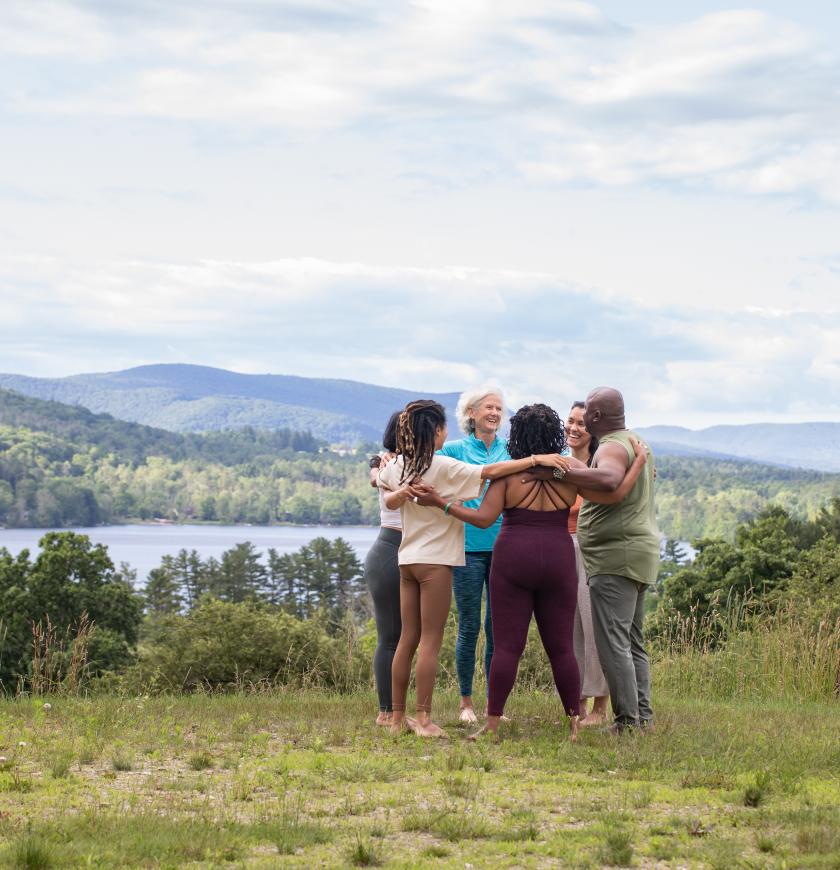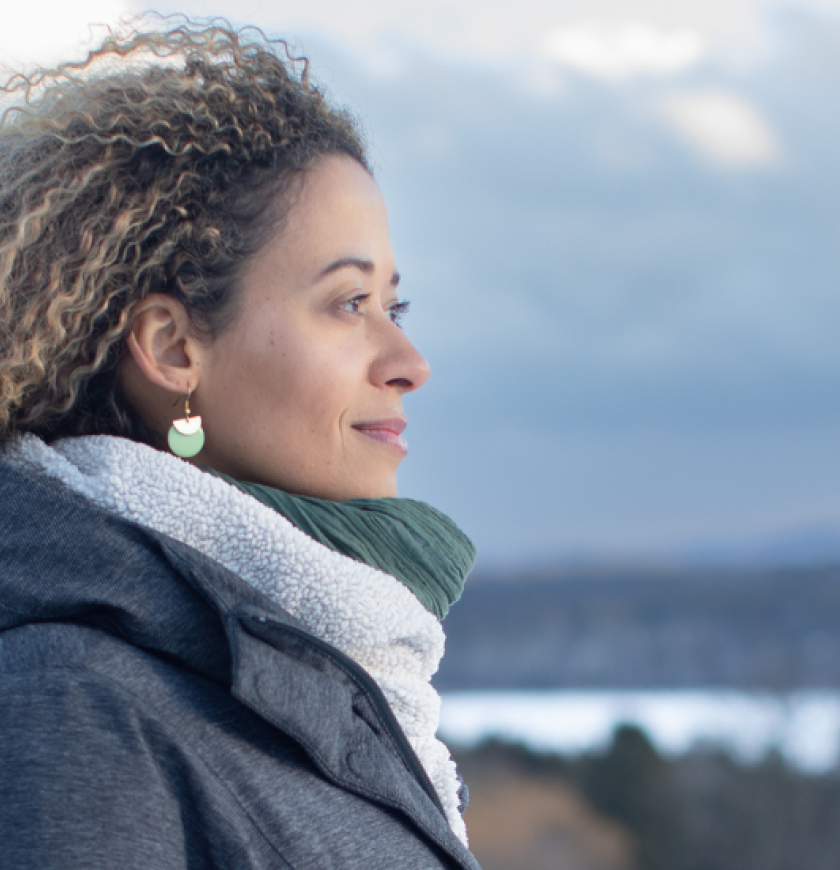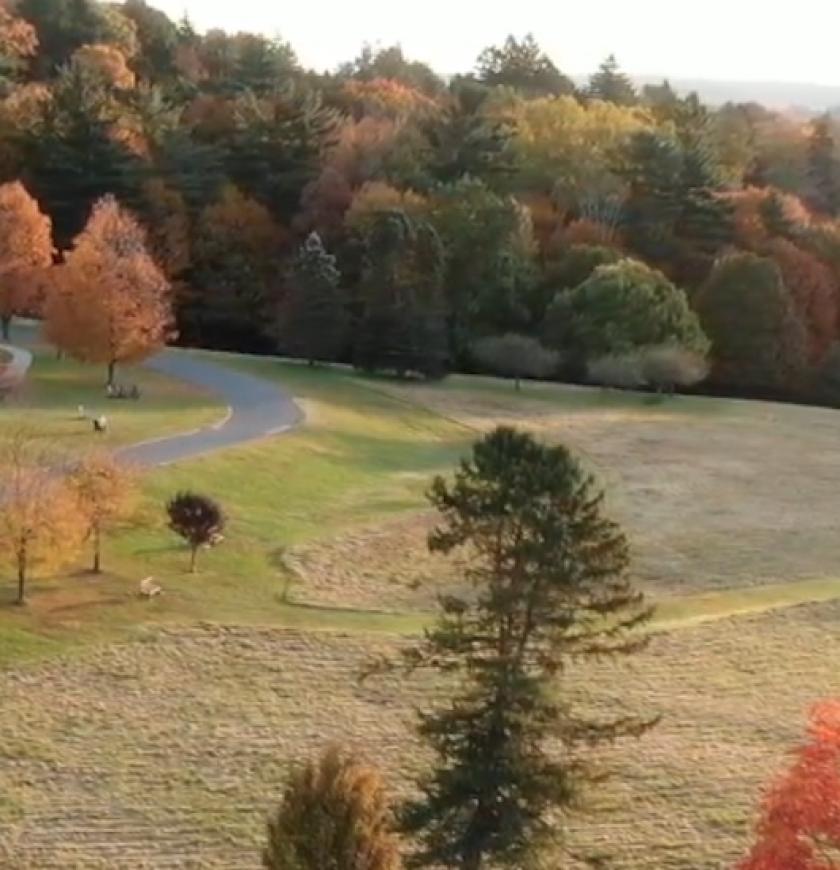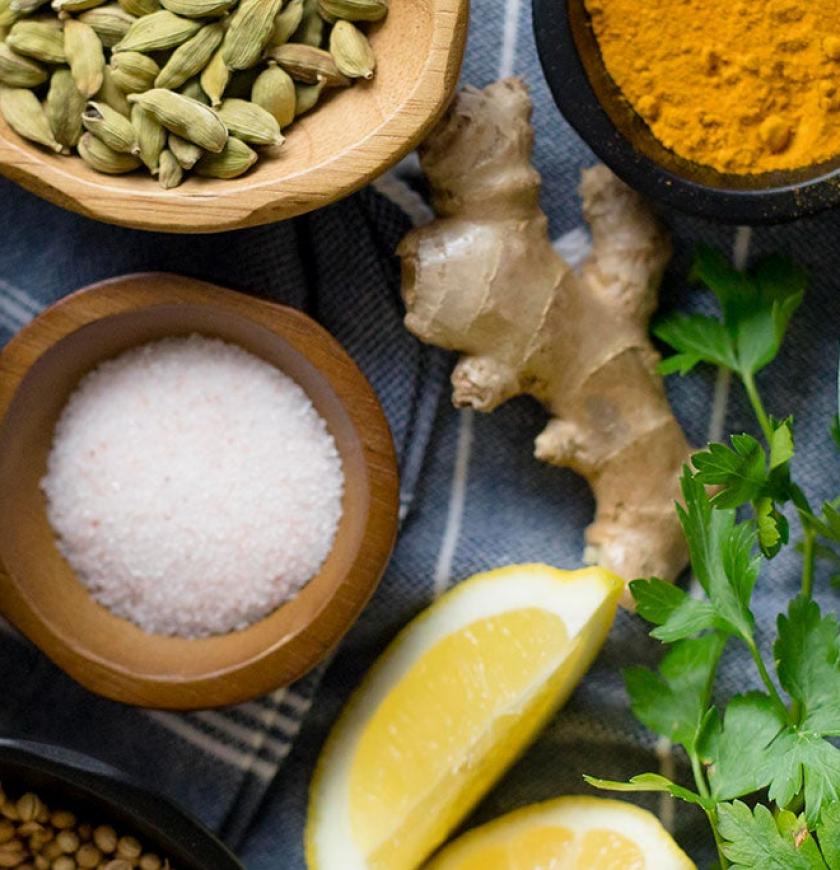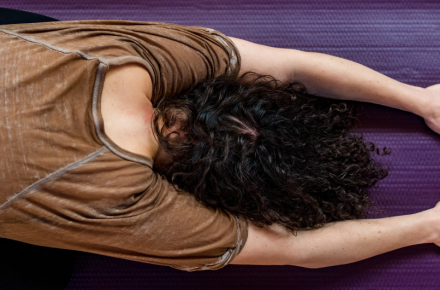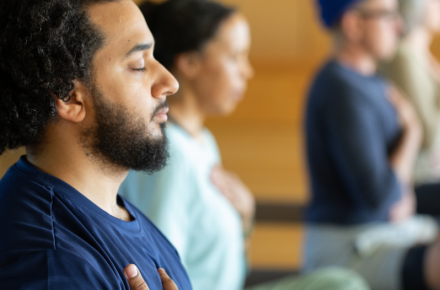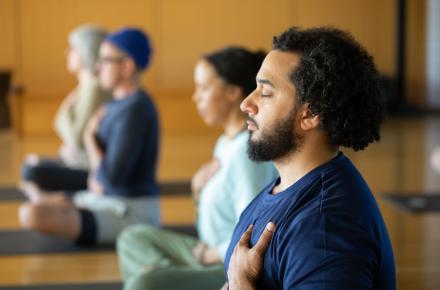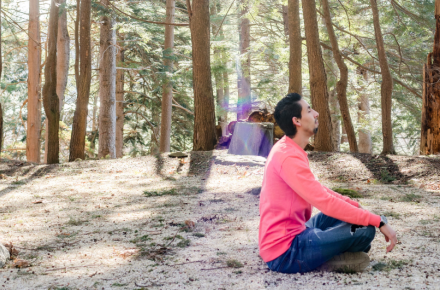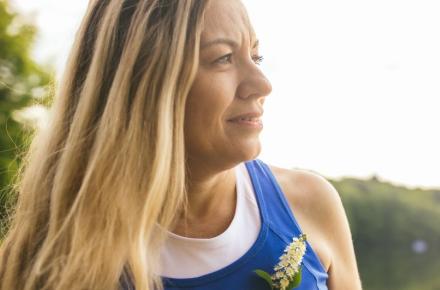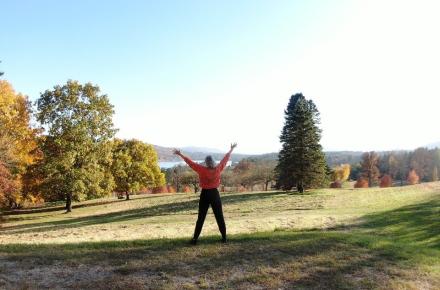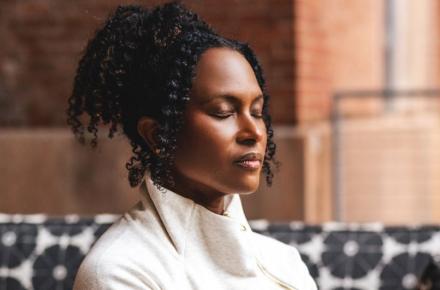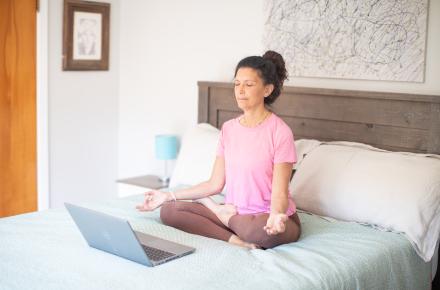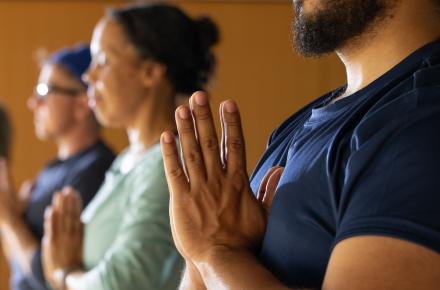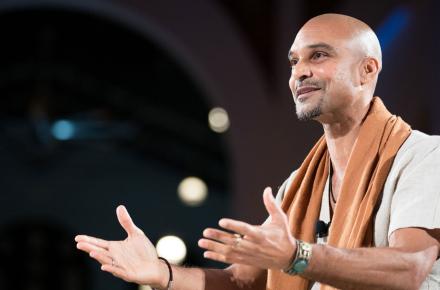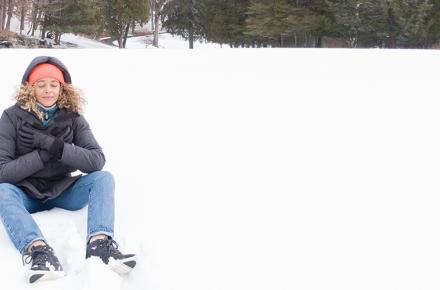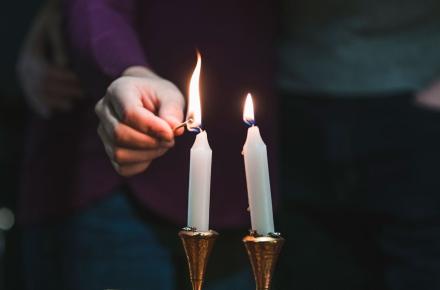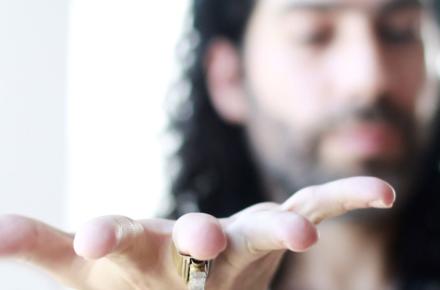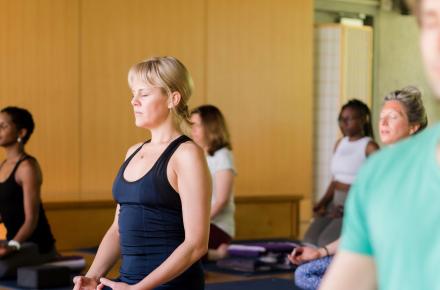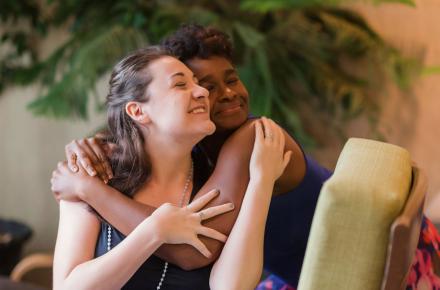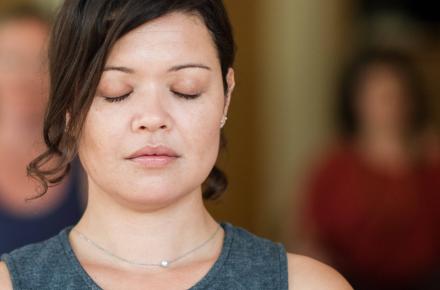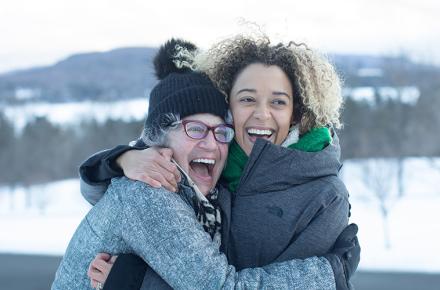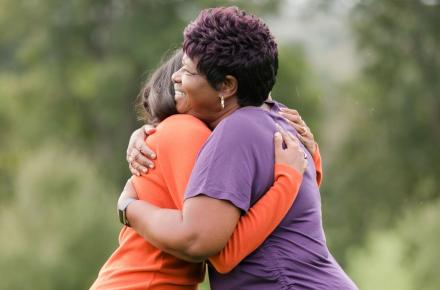Two Continuum of Yoga Exercises

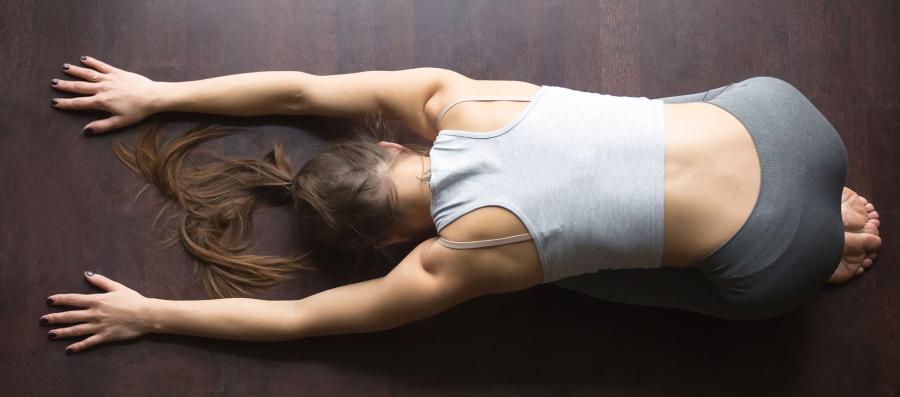
In modern culture, where everything is becoming mechanical—from our movements to the way we care for ourselves—somatic, embodied practices are rising in popularity. There is a deep calling to come home to the intuition, receptivity, and sensuality that can only be found in the quiet moments of your own attention and within your own body. This practice gives you a context in which to meet yourself with a strong and gentle heart.
The Continuum of Yoga developed out of my deepest need to recover my own embodied life. Having practiced in the yoga tradition for 35 years, and then spending 20 years committed to the practice of Continuum, developed by Emilie Conrad, I created what I call The Continuum of Yoga.
My practice became a journey back to my intuitive self-knowing. I no longer experienced the postures, breathing techniques, and meditation in the way I was used to exploring them; instead, they became a container to feel into the fluid moving from within, like the slow tides of the sea and its many changing currents.
As I honed this empowered way of feeling what rested just underneath, everything I had learned from other teachers, traditions, books, and so on—concepts of strength, core, grounding, fluidity, flexibility, and balance—took on new meaning. I began to feel what these words were on a sensory level rather than a thought, or something to try to achieve working from someone else's experience and discoveries. My practice shifted from a group of specific postures, breathing techniques, and meditation tools to an open meeting with what I was feeling into at the moment I placed myself on my mat. This meeting unfolded into a creative expression of sensing and feeling my way towards the liberating, non-conceptual adventure of my own body, a biological miracle, as territory for transformation and delight. Along the way, my outer life took on deeper and deeper levels of meaning as I felt into deeper and deeper levels of practice from the inside. Not the way I wanted to be, not in seeking to become something more, but in purely meeting myself just the way I was ... and in that meeting, things really began to change.
In the Continuum of Yoga, we use posture preparations as a container to more openly explore fluid movements—spirals, undulation, wave motion, spreading, and drawing outward and down. We use sound to help relieve the body of compression and to stimulate the fluids within so that we can sense and feel that movement more over time. After a while, this “fluid intelligence” begins to inform our movement in ways that can be very small and slow or quite dynamic, directing us towards what is most helpful for the health and well-being of the body.
Here are two Continuum of Yoga explorations you can try at home. Take time to do these more than once; “layering” them two or three times offers depth in sensing and feeling.
Suksma Citrini Breath
Suksma = small, subtle, fine narrow; citrini = “shining gold elixir inside your spine”
This exploration is best done seated in a chair or on the floor.
Take a natural inhale. Then bring your lips together, make a very small opening, and use very light pressure to move the exhale through the small opening while sending your attention from the base of your spine very slowly up to the crown of your head. Do this three times.
After you complete the breath, practice open attention to how your body has received the exploration. Notice your breath, and any fluid movements or changes in volume, shape, etc. In open attention, there is no right or wrong; you are simply paying attention to what arises. This is essential to learn how to come home to the body’s language, which is sensation.
Garbhasana Bhava
Garbhasana = Child pose; bhava = “mysterious becoming”
Lying on your side or in a traditional Child pose, begin with a low-toned om sound, taking the sound around and through the body. Start in the places where your body makes contact with the the floor. Then move the sound around in non-linear ways, making spirals, undulatory shapes, waves, etc. Do about six to eight rounds of om.
Return to Suksma Citrini Breath, and then back to Garbhasana Bhava, practicing open attention between each. Once you complete the practice, rest for a while. You might consider journaling about your experience.
Explore the Continuum of Yoga with Bobbie Ellis at Kripalu.
